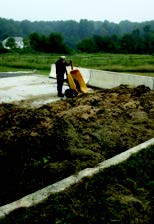by Katherine O. Rizzo (first published in the November 2022 Equiery)
The Sassafras Natural Resource Management Area and Turner’s Creek Park are located side-by-side in Kennedyville along the Sassafras River. Sassafras NRMA is run by DNR; Turner’s Creek is a Kent County public park. Trail users enjoy beautiful views of the river as well as plenty of bird sightings and wetland habitats. From the higher areas of Sassafras, trail users can also see the nearby Chesapeake Bay. Both park entrances are on Turners Creek Road and the parks are open year-round from sunrise to sunset.
Turner’s Creek settlement was developed by Donaldson Yeats before the Revolutionary War as a trading hub for the northeastern Chesapeake area. The settlement boasted a shipyard, a tannery, a granary, and a dock.
Merchants used the Sassafras River to ship their products down the Chesapeake Bay and to ports beyond. When the Revolutionary War came to Turner’s Creek, the residents chose – reluctantly, we are told – to sell goods and supplies to the British, in exchange for which the British did not destroy the town.
The Knock’s Folly Visitor Center features exhibits that highlight the history of the area including farming, the Native American Tockwogh people, and Captain John Smith’s visit to Turner’s Creek. The visitor center also features exhibits on the rich natural history and wildlife of the Sassafras River area.
The trail system is about nine miles long with two trailer parking areas in Sassafras. Trail riders can access Turner’s Creek Park from these trailer parking areas near Turners Creek Road. The trails are a variety of surfaces including dirt roads, field edges and natural paths through young forest. Trail riders are asked to stay on the trails as the sloping hillsides of the park are prone to erosion.
Turner’s Creek Park is 147 acres of trails, woodlands and open field as well as a waterfront bluff overlooking Turner’s Creek. The park also includes a public boat ramp and picnic pavilion. Public restrooms can be found in the basement of the historic Lathim House, which was built in the late 18th century. The Kent Museum, Inc., sets up a soil conservation agricultural demonstration in the park on the first and third Saturday of the month from May through October. The demonstration also includes antique agricultural equipment.












